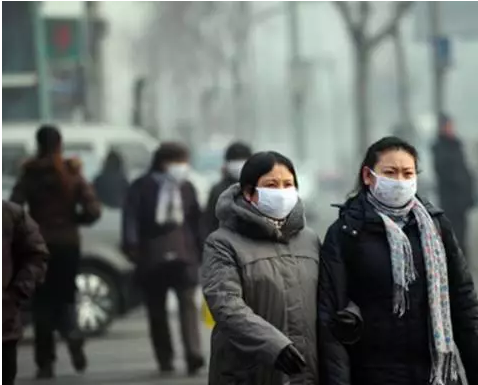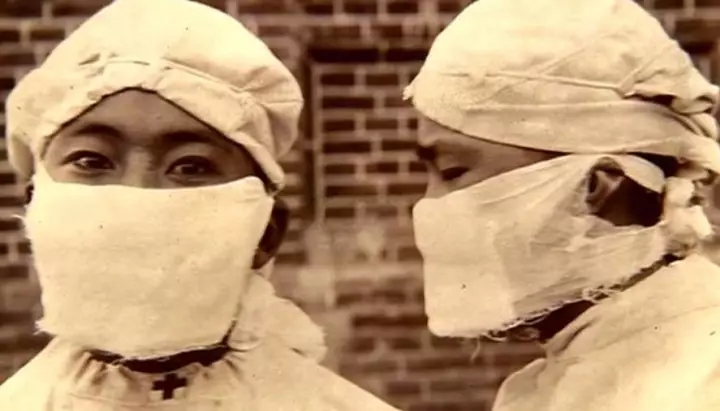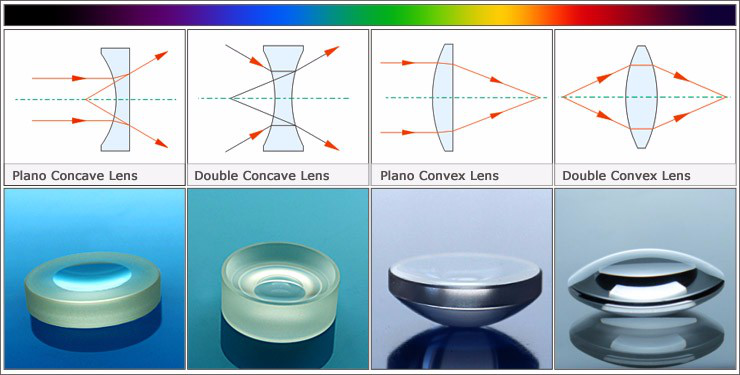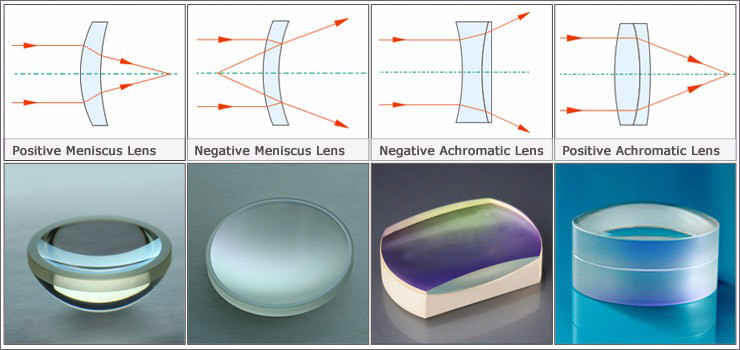[Integrated] He invented China's first mask
The haze came again.
From the 4th of this month, the yellow Huai area in North China will be covered in a dim yellow. In the misty days, masks became an indispensable "weapon."

When referring to a mask, you won't find it rare. But you may not know that in the early 20th century, an overseas Chinese invented and promoted China's first mask. It was also the time he stepped in and turned the tide, curbing the spread of the third plague in human history and saving countless lives on the land of China.
After this "enforcement," he became an internationally admired "hero", and when he was just 30 years old.

He presided over the establishment of more than 20 hospitals and medical schools in China. The famous Concord Hospital is inseparable from his creation. In 1935, he was nominated for the Nobel Prize in Physiology or Medicine and was the first Chinese to receive this honor.
In 1937, he moved to the south and returned to Penang, Malaysia. This imposing generation of Yingjie, from then on, is obscure and saves his life until his death. And there are fewer and fewer people who know him.
He called Wu Liande. Perhaps you have never heard of this name, but history should not forget him.

The scholarships were soft and he became a doctor of Cambridge at the age of 24.
Wu Linde was originally from Taishan, Guangdong, and was born on March 10, 1879 to an overseas Chinese family in British Penang. His father, Wu Yixue, is a famous goldsmith in Penang, and his mother is the second generation of Malayahua.
In 1886, 7-year-old Wu Liande entered the Kingdom of England. From the beginning of enlightenment, he showed his hard work. He often waited for his family to fall asleep and lit a coconut oil lamp to read under the lights. His academic performance is also much higher than his peers.
At the age of 17, Wu Liande received a Queen's scholarship and went to Cambridge to study medicine at the Imani Institute. During school, he almost included all the school awards. In 1902, he received a bachelor's degree in medicine and successively pursued studies and studies at the Liverpool School of Tropical Diseases in the United Kingdom, the Health Institute at Halle University in Germany, and the Pasteur Institute in France.
In 1903, only 24 years old, he was awarded a doctorate in medicine by Cambridge University.
At the end of 1904, he returned to Penang, set up a private clinic and devoted himself to social reform. However, he felt "always unsatisfied, because I always wanted to do a little more medical care. At the same time, I also wanted an opportunity to serve the motherland."
In 1907, Wu Liande was hired by Yuan Shikai, Governor of the Zhili Province of the Qing Dynasty to serve as Deputy Superintendent of the Tianjin Army Military Medical Center (ie, vice presidential position). Three years later, he got his wish.
At the end of 1910, it was the last winter of the Qing Dynasty. A fierce plague suddenly broke out in the northeast.
On October 25, it was the first time that inmates had died of violent death in Manzhouli. On November 7, the plague spread in Harbin.
The plague-infected people suffered from fever, headache, chest tightness, and dry cough ... and soon died of suffocation. The skin became blue and purple after death. The shadow of death hangs at the top, and everyone feels at once.
On December 24, the young Wu Liande arrived in Harbin. With Wu Liande, there was only one instructor and one student at the Army Medical Center. Soon, he performed his duties in the capacity of the "Principal Medical Officer of the Three Provinces of Pest Control."
On the third day of his arrival, Wu Liande decided to take risks to dissect his body in order to find out the source of the epidemic.
In a local slum, Wu Liande performed the first human anatomy of a Chinese doctor. After analysis confirmed that Harbin's epidemic is a pneumonic plague, spread through human sucking droplets. This is the history of science, the first proposed plague classification.
At the time of the year, in order to stop the spread of the epidemic with the flow of people returning home for the Chinese New Year, Wu Liande put forward preliminary preventive measures: controlling railways and highway traffic to prevent the spread of the plague, isolating the epidemic areas, and recruiting doctors in the customs. He also organized a large transportation team to train and mobilize various industry service personnel, including postal men, to invest in prevention activities.
In his memoirs, he wrote, "I played the role of a grand commander-in-chief, giving orders to doctors, police, the army, and even local officials."
In order to prevent droplet infection, Wu Liande specifically designed a double gauze mask for isolation of patients, later known as the "Wu's mask."
The masks are simple to make, each requiring only two and a half cents of the national currency. The people have brought masks and the mortality rate has been greatly reduced.
At the “Universal Plague Research Conference†held in April 1911, this convenient and practical mask was praised by experts from various countries: “The mask that Wu Liande invented is simple in design, light in manufacturing cost, but also effective in serving. good."
When the epidemic enters the final stage, considering that carrion is a very likely source of infection, Wu Liande persuaded everyone to concentrate the infected bodies on cremation. Due to “there are violations†of traditional human relations, this matter was reported to the Qing court and approved before it was processed. This is the first time that the cremation in Chinese history has occurred.
In less than four months, a plague that had not been encountered for centuries was finally subdued. This is the first time in human history that it has succeeded in controlling infectious diseases on a large scale. Wu Liande has contributed.
According to a letter sent to the United Kingdom’s “The Times†in Beijing by Morrison’s correspondent for Wu Liande: “Because you are in control of the recent plague epidemic, your name is well known in Europe, especially in the UK.â€
Wu Liande was nominated for a Nobel Prize in Physiology or Medicine in 1935 for his research and contribution in pneumonic plague and became the first Chinese to receive this honor.
In 1913, American medical historian Carl Lisen published a book on Medical History. This is a monograph on the history of medicine in the world. The book is nearly 700 pages long, and the content about Chinese medicine is scarce, less than one page, and there are errors.
Wu Liande was very dissatisfied after reading it. He wrote a letter to Jia Lisen, but Jia Lisen sent a reply: Chinese medicine or a director of professionalism, he hasn’t seen a person who speaks in Spanish and has only half a page of information. He is still outsider’s. As for the reference, there is no way to understand it.
Wu Liande was very shocked. He practiced himself, and Wang Jimin spent 16 years writing a book titled “Chinese Medical History†in English. He introduced the history and achievements of traditional Chinese medicine to the world, and safeguarded the status and dignity of traditional Chinese medicine.
The book was published in 1932 and reprinted several times. It became an early English teaching of traditional Chinese medicine and was taken seriously by foreign medical scientists.
Wu Liande focuses on medical education and development in China. In 1914, Wu Liande proposed to build an institute in Beijing. The recommendations of modern medical schools and hospitals were adopted—this was the later Peking Union Medical College and hospital.
The Beijing Central Hospital, built under the leadership of Wu Lian De, became the first modern hospital established by the Chinese people, which is today's Peking University People's Hospital.
In 1924, Wu Liande built a Northeast Army Hospital in Shenyang, which was China's largest and best-equipped hospital at the time. In 1926, he founded the Harbin Medical College to train local medical talents. This school is the predecessor of Harbin Medical University.
He presided over the establishment of more than 20 hospitals and medical colleges and universities in China and trained many medical talents for China.
In 1937, Wu Liande’s house in Shanghai was destroyed by Japanese soldiers. The change of family affairs and the turmoil in the situation led him to finally decide to bring his family back to Malaysian Penang. In 1938, Wu Liande practiced medicine in Ipoh and drove it.
Since then, the past has gradually become dusty. In the past, people around us did not know much about it.
On January 21, 1960, Wu Liande died in Penang, at the age of 81. The Times of January 27 stated that “The death of Wu Liande has lost a legendary figure to the medical profession. We have done everything we have done for our lives. We have no return, and we will always be grateful to him.â€
In the preface to the English version of the book "The Resistance Warrior - An Autobiography of a Modern Chinese Doctor" published in 1959, Wu Liande wrote:
"I devoted most of my life to the ancient China and established it from the end of the Qing dynasty to the Republic of China. Until the collapse of the Kuomintang, the memories of the past are still fresh in my mind. The establishment of the New China Government has made this great country happy and prosperous forever..."
Sources of information: China Youth Daily, China News, People's Daily Overseas Edition, Harbin News Network, China Overseas Chinese Network. (Editing: Yan Wenjuan)
Optical Lenses are optical components designed to focus or diverge light. Optical Lenses, which may consist of a single or multiple elements, are used in a wide variety of applications from microscopy to laser processing.
Worldhawk can supply high precision Plano Convex Lens, Double Convex Lens , Plano Concave Lens, Double Concave Lens, Meniscus Lens , Achromatic Lens and Aspheric Lens.
Optical glass lenses have a wide variety of applications. Germanium (Ge), Silicon (Si), or Zinc Selenide (ZnSe) lenses are ideal for transmitting the Infrared (IR) spectrum, while Fused Silica is well suited for the Ultraviolet (UV).


Plano Concave Lens
Concave Lens,Plano Concave Lens,Concave Cylindrical Lens,Plano Concave Lenses
ChangChun Worldhawk Optics Co.,Ltd , https://www.worldhawk-optics.com